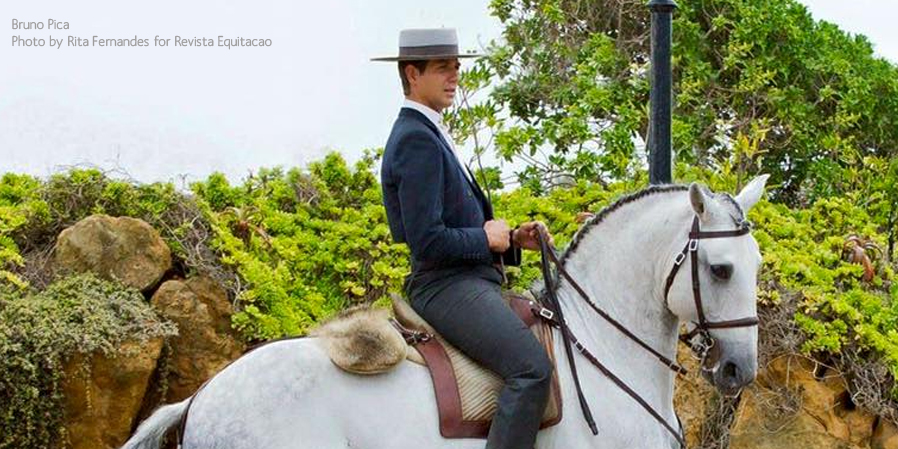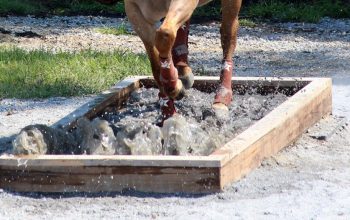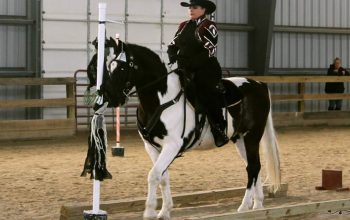
The Sport
The discipline of Working Equitation (WE) was created to celebrate the partnership between horse and rider, with a focus on classical horsemanship and use of the horse for ranch work. The aim of the sport is to preserve and perpetuate each country’s type of equitation, as well as the various working equestrian traditions and the tack and attire which each nation brings to the sport.
Working Equitation was pioneered by four countries: Italy, Portugal, Spain, and France, with the first International competition being held in 1996. In 2004, the World Association for Working Equitation (WAWE) was established to govern the sport internationally. Since that time, the sport has continued to grow. It is now well established in Europe and the Americas. WAWE rules are used for all international competitions, but each individual country has its own rules for domestic competitions.
In the United States, Working Equitation competitions offer five performance levels to accommodate horses and riders at various stages of training: Introductory, Novice, Intermediate, Advanced, and Masters. The Masters level is equivalent to the international standard of the sport.
WORKING EQUITATION TRIALS
Working Equitation competitions consist of four distinct trials, or tests. The first three, Dressage, Ease of Handling, and Speed, are required for both individual and team competitions. The fourth trial, Cow trial, is included for team competitions. Horse/rider pairs receive scores based on their placing in each of the trials, and these scores are tallied to determine the overall placing at the competition.
 DRESSAGE
DRESSAGE
WE UNITED Working Equitation United States Dressage EvanEach level has its own dressage test. Each movement is given a numerical score, and collective marks are given for the horse’s impulsion, submission, and quality of gaits, as well as for the rider’s position and effective use of aids. The dressage tests are designed to test the horse and rider as well as to serve as an aid in training. The movements at each successive level build upon movements of the previous levels and coincide with the type and difficulty of movements expected in the Ease of Handling and Speed trials at the respective levels. The dressage tests at each level are designed to systematically prepare the horse and rider for the degree of collection and engagement needed to ride at the highest level of competition–Masters. The Masters level dressage trial requires competitors to perform a series of advanced movements such as pirouettes, flying lead changes, and lateral movements while riding one-handed. In the case of a tie at the end of the competition, Dressage placings are used to determine the final placings.
EASE OF HANDLING
In this trial, horse and rider negotiate a series of obstacles, receiving a 0-10 score for the quality with which they perform

each one. As with the Dressage trial, the judges also award collective marks for horse’s impulsion, submission, quality of the transitions, rider’s effectiveness, etc. In the Ease of Handling trial, judges are looking for smooth, symmetrical performance, with a particular emphasis on quality of the geometry within each of the obstacle patterns. At the Introductory, Novice, and Intermediate levels, riders may complete this trial using two-hands on the reins. At the Advanced and Masters levels, riders must ride one-handed.
SPEED
This trial uses many of the same obstacles as are used for Ease of Handling, but rather than being judged on the quality and smoothness of the performance, the event is timed, with the faster times placing higher. For any penalties incurred over the course, time is added to the competitor’s final time. Additionally, if the obstacle “Retrieve a Pole, Skewer a Ring” is included on the course, the competitor can earn a bonus of 10 seconds subtracted from their final time for successfully skewering the ring. This exciting, fast-paced trial is a spectator favorite!
COW
This trial tests the ability of a horse and rider to work, individually and as a team, with cattle. The test is performed with a team of 3 or 4 riders. The objective is for each rider to individually sort,  cut, and herd a pre-selected cow from the herd and then as a team herd the selected cow into a designated pen. As a timed event, there are time penalties for course errors.
cut, and herd a pre-selected cow from the herd and then as a team herd the selected cow into a designated pen. As a timed event, there are time penalties for course errors.
As a member-led organization, WE United invites riders and equestrian enthusiasts who are interested in participating in the growth and development of Working Equitation in the United States to join WE United today.
Visit We United on the web: WEUnited.us




